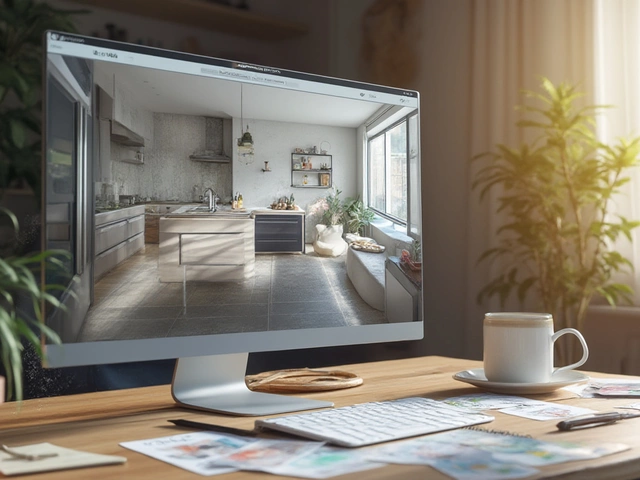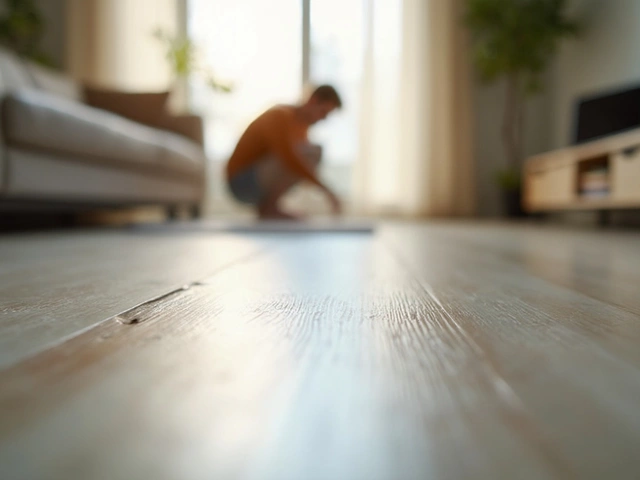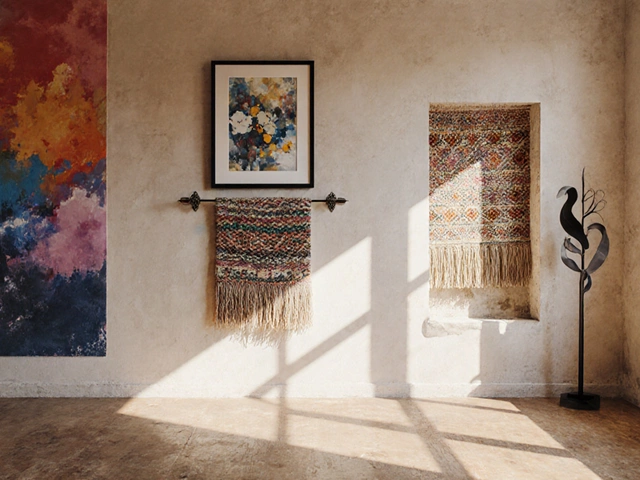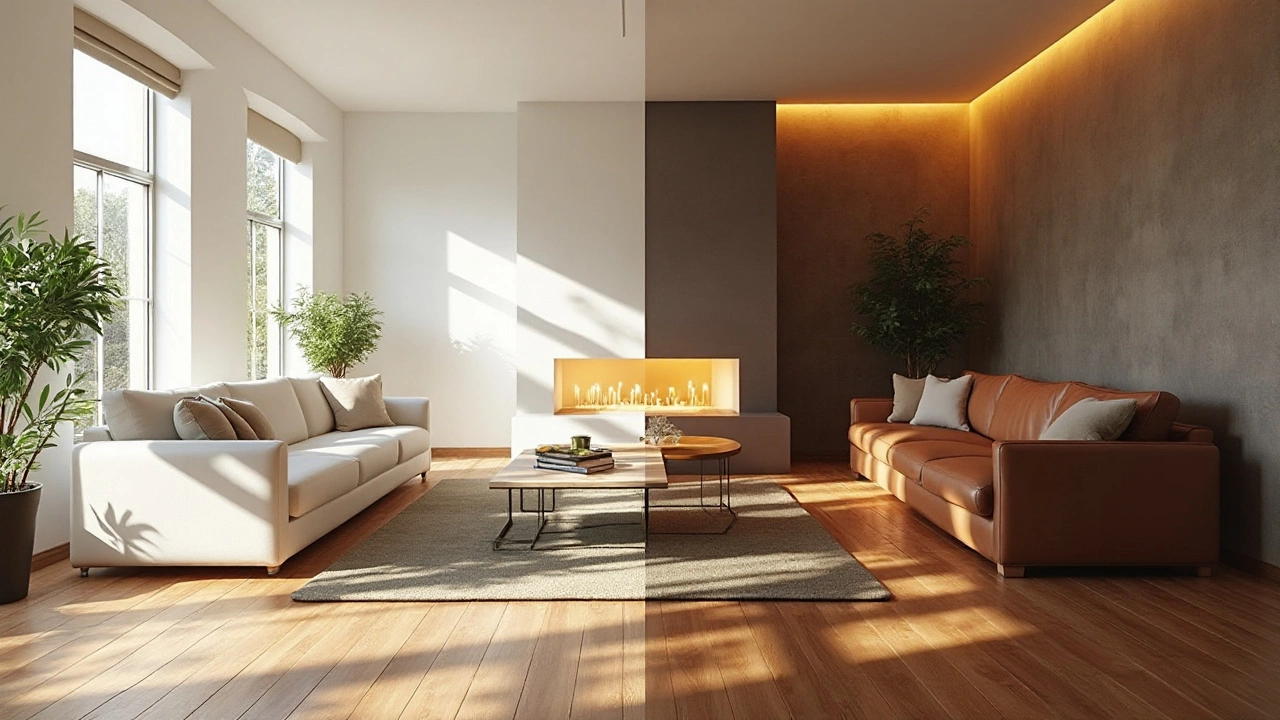
Choosing between lighter and darker flooring can significantly influence your home's overall ambiance and functionality. What might seem like a simple preference at first glance involves balancing aesthetics with practicality.
Lighter floors can create an illusion of openness and enlargement, bathing rooms in natural brightness, making them highly preferable for smaller spaces. In contrast, darker flooring often adds depth and elegance, enveloping rooms in a cozy, inviting atmosphere. Each option brings its own set of vibes and can dictate the room's mood.
However, it's not just about the light or dark shades. Factors such as room size, intended use, lighting, and personal taste are crucial in finding the perfect match for your floors and furniture. Remember, your decor choices should create harmony within the space, with flooring complementing furnishings rather than competing with them.
- Understanding the Impact of Light and Dark
- Room Function and Mood Setting
- Playing with Textures and Materials
- Practical Tips for Harmonizing Flooring and Furniture
Understanding the Impact of Light and Dark
When you're piecing together the design of a room, the choice of flooring, be it lighter or darker than your furniture, fundamentally alters the space's atmosphere. Each choice offers unique characteristics, shaping the perception and feel of your home. Flooring can either absorb the light or reflect it, thereby influencing how airy or intimate your space feels. Lighter floors, such as white oak or pale birch, tend to reflect more light. This can be particularly beneficial in smaller or dimly lit rooms, making them appear more spacious and illuminated.
On the other hand, darker floors like espresso or mahogany create a more grounded and elegant backdrop. They can add character and sophistication to any room; often, they imbue spaces with a more substantial and intimate feel. There’s an undeniable richness to darker tones which can enhance more formal or traditional decor settings. However, they also demand more maintenance, as dust and scratches become more visible against the dark canvas. Practicality aside, the choice between light and dark can depend significantly on personal tastes and lifestyle needs. To find what's best for your home, consider both the aesthetic appeal and the functionality of your chosen shade.
In fact, as Sarah Richardson, a revered interior designer, once said,
'Choosing your floors is like picking out a pair of shoes. You need them to be comfortable, practical, and suited to the occasion.'Consider those words when deciding the direction of your interior design. Balancing the tones of your floor and furniture could not only enhance the look of your home but also the way you experience it every day. Your environment exerts a subtle influence on emotions and productivity, underscoring the importance of choosing wisely.
Yet, the decision between light and dark need not be binary. A trend that's been gaining momentum is the artful layering of shades and textures, bridging the gap between extremes and adding depth to a room. Pairing mid-toned woods with furniture in contrasting shades can create visual interest without overwhelming the senses. This approach offers the best of both worlds—a compromise that harmonizes the environment with both functionality and style.
Room Function and Mood Setting
The function of a room and the mood it sets can dictate your choice when deciding between lighter or darker flooring. Every room in a house serves a different purpose, and the same flooring color choice might not work for each. For instance, a bright living area designed for social gatherings might benefit from lighter floors, which reflect more light and create an airy vibe. Rooms with abundant natural light, like living rooms or kitchens, can enjoy the play of sunlight on light floors, making the area feel vibrant and energetic.
There's a no denying that lighter floors convey a sense of space. It tricks the eyes into perceiving the room as larger and more expansive, a feature that is especially helpful in compact rooms or areas that don't receive ample natural light. Bedrooms, on the other hand, might have a more relaxed, soothing aura with darker floors, which imbue the space with a sense of warmth and coziness.
Dark flooring can transform a dining room into a sophisticated, elegant setting. It envelops the room, accenting the dining furniture and creating a great backdrop for evening dinners and gatherings. It is worth noting that darker floors can help mask messes better than lighter ones, making them a practical choice in high-traffic regions or homes with children or pets.
In terms of mood, light floors can evoke cleanliness and simplicity, working well in minimalistic settings. Contrastingly, darker floors can offer a sense of refinement and tradition. As interior designer Kelly Wearstler puts it,
"The floor is the foundation of any beautiful room. Start with a great floor and build around it."Her insight highlights the importance of considering the room's purpose and ambiance.
Balancing Light and Dark
Another critical aspect when choosing a floor color is to ensure that the flooring neither clashes with nor overshadows the furniture. In a children's playroom, for example, lighter floors could complement vibrant, playful furniture without making the space seem heavy or dark. On the opposite spectrum, a library or office could benefit from darker flooring that complements rich wood furniture, fostering an environment of focus and concentration.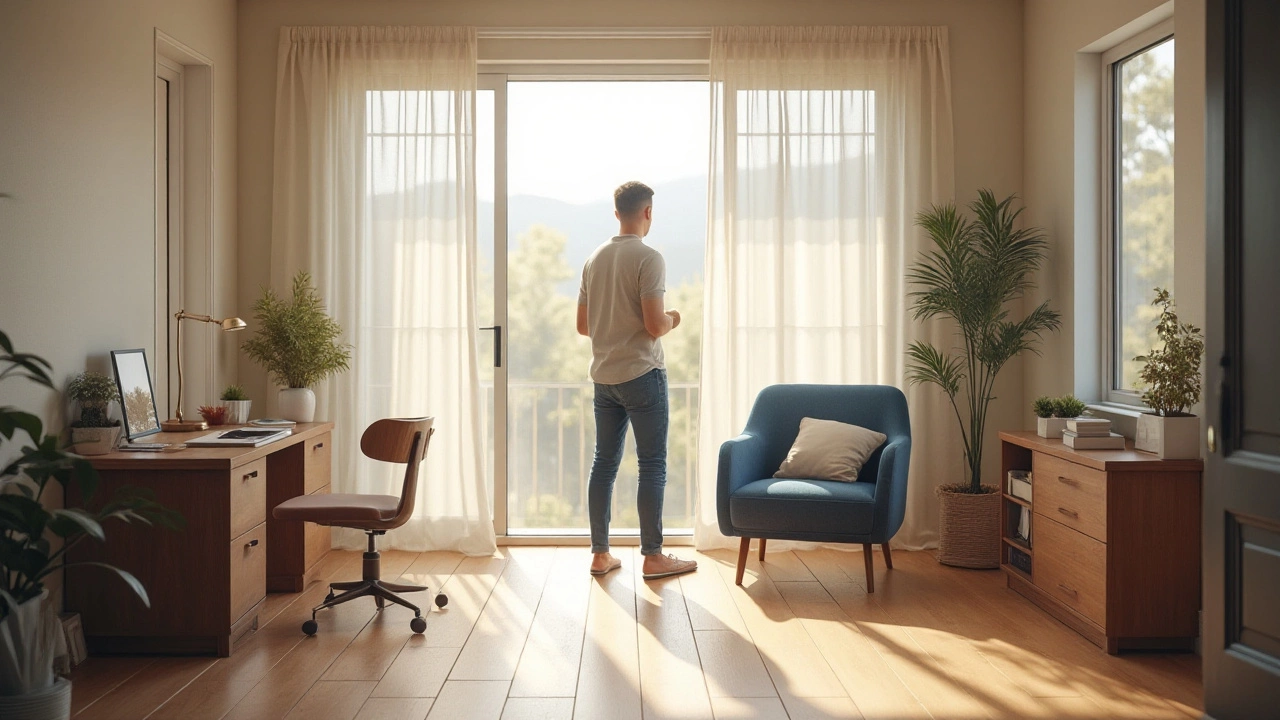
Playing with Textures and Materials
When it comes to interior design, textures and materials are the unsung heroes that can transform a space radically. As you weigh the pros and cons of lighter versus darker flooring, consider how different materials interact with the furniture in your home. Often, it's not just about what color you choose but how that color comes to life through various materials like wood, tile, or carpet. For instance, a textured wooden floor might offer a rustic charm that a sleek, polished tile can't match. A lot of people opt for mixing textures to create a balanced visual interest, helping to make a room feel dynamic and engaging.
Texture adds depth to a room and plays a crucial role in how both light and dark colors are perceived. A glossy, dark floor can have a reflective, almost mirror-like surface, which can brighten a room differently compared to a matte finish. Meanwhile, lighter flooring with a distressed texture can evoke a sense of age and character, adding a layer of complexity to minimalistic modern furniture. In choosing textures, it may be beneficial to consult sources like interior design magazines or speak with professionals. As renowned designer Sarah Richardson once said,
“The beauty of decorating is in the mix of textures. That's what makes a space feel alive.”
The materials you select should also align with your lifestyle needs. For families with children or pets, durability becomes a top priority. Consider resilient materials like engineered hardwood or luxury vinyl planks that can withstand high traffic without losing their aesthetic appeal. On the flip side, if your priority is luxury and comfort, then plush carpets or intricate tiles might catch your eye. Some emerging trends even blend materials in fascinating combinations. Imagine a living room where sleek porcelain tiles transition into cozy carpeted areas, framing your furniture pieces like art.
In today's market, sustainable materials are gaining traction, providing an eco-conscious choice without sacrificing beauty or longevity. Bamboo and cork, both lighter in color, offer impressive resilience and environmental benefits. While these might clash with traditionally dark furniture, a well-thought-out design can not only make the space harmonious but also make a statement about your values. If data could guide your decision, consider that a 2023 survey found that 40% of homeowners opted for sustainable materials in their recent renovations, highlighting a growing trend towards eco-friendly choices.
| Material | Durability | Environmental Impact |
|---|---|---|
| Engineered Hardwood | High | Medium |
| Bamboo | Very High | Low |
| Luxury Vinyl | Medium | High |
As you navigate these choices, remember to factor in the tactile feel of surfaces too. A cool stone underfoot might be refreshing on a hot day, while a warm wooden floor might provide comfort in a cooler climate. Each choice, from sleek tiles to lush carpet, influences not just the look of your room but its feeling. So, when matching flooring with your furniture, unleash the potential of textures and materials to craft a space that reflects your personal style effortlessly.
Practical Tips for Harmonizing Flooring and Furniture
Creating a harmonious look between your flooring and furniture is about finding the perfect balance that evokes the right mood and ensures functionality. One effective approach is starting with an inspection of the room’s natural light. Rooms flooded with sunlight can handle darker floors without feeling cramped, as the play of light maintains a bright ambiance. Conversely, areas with limited light might benefit from lighter flooring to amplify whatever daylight is present. Don’t forget that shadows will appear more evident on lighter floors, adding character but needing consideration in cleaning routine.
Consider your color palette as another essential aspect of harmonization. Choose complementary colors to weave through the space, creating a visual connection between floors and furniture. For instance, pair dark wood floors with furniture that has metallic or glass features for contrast. You might want to introduce an accent piece, such as a bold rug that contains elements of both your flooring and furniture hues, tying them together seamlessly.
A crucial factor often overlooked is the room's function. Areas with high traffic could benefit from mid-tone flooring that hides scuff marks effectively, reducing maintenance worries while maintaining appeal. In living rooms, lighter floors paired with cozy, plush furniture invite people to gather and relax, crafting a welcoming space that feels like a breath of fresh air.
"It's not just architecture, but it's people that make a home beautiful." – Ilse Crawford. This sentiment rings true when crafting a space that prioritizes comfort and aesthetics in equal measure.
When choosing materials, mix and match textures to add depth, making the room modern and dynamic. Consider wooden floors with a matte finish against glossy painted furniture or minimalist metal pieces for an effortless contemporary vibe. Each texture should complement, not clash with, the rest of the room.
To guide your decisions, use vision boards or digital tools. Plenty of apps let you visualize how different combinations of flooring and furniture look together in a virtual space. Take the time to experiment, exploring various settings without commitment. As a rule of thumb, remember these three key elements: light balance, functional harmony, and textural variety. This trio will guide you towards creating interiors that are both beautiful and practical.
Flooring and furniture synchronization is an art form. It brings dreams to life in one’s personal sanctuary. When done correctly, it not only pleases the eye but also makes everyday life more pleasurable and less chaotic. Consider your choices carefully and let your space reflect both personality and practicality with a perfect symphony of style.

